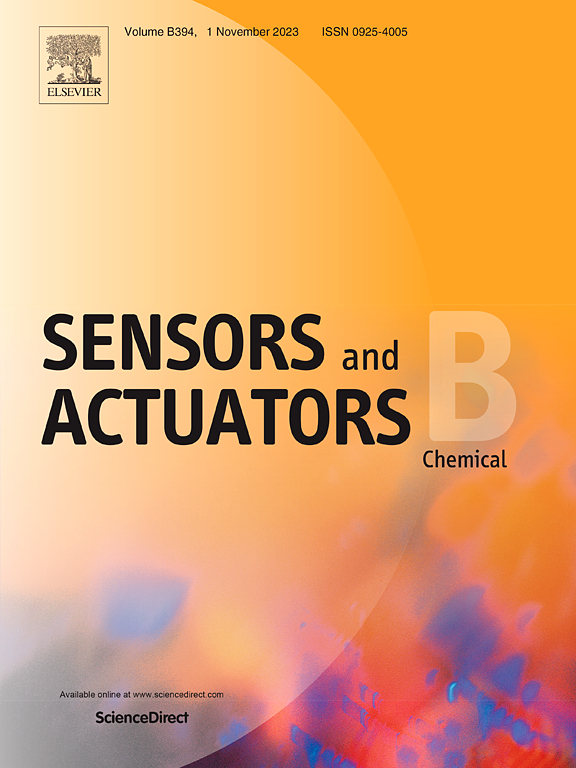Using designed polypeptides to develop novel phage-mediated triple antibody sandwich immunoassay for the specific detection of Escherichia coli O157:H7 in milk
IF 8
1区 化学
Q1 CHEMISTRY, ANALYTICAL
引用次数: 0
Abstract
In this study, a phage-mediated triple antibody sandwich immunoassay (TAS-ELISA) was developed and exploited for the sensitive detection of Escherichia coli O157:H7 (E. coli O157:H7), which could be potentially tailored to individual serotypes testing. Bioinformatics analysis was conducted to elucidate the potential epitopes of E. coli secreted protein A (EspA) and Outer membrane protein A (OmpA). Peptide fragments were selected and designed to serve as antigens in the screening of phage-displayed antibody library, two nanobodies (Nbs) that exhibit specific capabilities for distinct epitopes recognition were obtained. Using monoclonal antibody as capture and two Nbs as tracer, a phage-mediated triple antibody sandwich immunoassay was developed. The results revealed that the limit of detection (LOD) for E. coli O157:H7 was 1.89 × 103 CFU/mL with no significant cross-reactivity to other bacterial, which was 41.8-fold higher than that of the sandwich immunoassay based on mAb. Furthermore, molecular docking provides insight into the specific binding interactions between these two distinct epitopes and nanobodies. Method validation revealed that the developed TAS-ELISA has great potential for the specific determination of E. coli O157:H7 in food and could be further refined for precise serotype discrimination by identifying multiple unique epitopes. This study provides an alternative strategy to precisely detect E. coli O157:H7 in food.

利用设计的多肽建立新的噬菌体介导的三抗体夹心免疫分析法,对牛奶中的大肠杆菌O157:H7进行特异性检测
本研究建立了一种噬菌体介导的三抗体夹心免疫测定法(TAS-ELISA),用于大肠杆菌O157:H7 (E. coli O157:H7)的灵敏检测,该方法可能适合于个体血清型检测。通过生物信息学分析,确定了大肠杆菌分泌蛋白A (EspA)和外膜蛋白A (OmpA)的潜在表位。在噬菌体显示抗体文库筛选中,选择并设计肽片段作为抗原,获得两个具有不同表位识别能力的纳米体(Nbs)。以单克隆抗体为捕获物,两种Nbs为示踪剂,建立了噬菌体介导的三抗体夹心免疫分析法。结果表明,大肠杆菌O157:H7的检出限(LOD)为1.89×103 CFU/mL,与其他细菌无显著交叉反应性,比基于单抗的夹心免疫分析法高41.8倍。此外,分子对接可以深入了解这两个不同的表位和纳米体之间的特定结合相互作用。方法验证表明,所建立的TAS-ELISA法可用于食品中大肠杆菌O157:H7的特异性检测,并可通过识别多个独特的表位进一步完善血清型鉴别。本研究为精确检测食品中的大肠杆菌O157:H7提供了一种替代策略。
本文章由计算机程序翻译,如有差异,请以英文原文为准。
求助全文
约1分钟内获得全文
求助全文
来源期刊

Sensors and Actuators B: Chemical
工程技术-电化学
CiteScore
14.60
自引率
11.90%
发文量
1776
审稿时长
3.2 months
期刊介绍:
Sensors & Actuators, B: Chemical is an international journal focused on the research and development of chemical transducers. It covers chemical sensors and biosensors, chemical actuators, and analytical microsystems. The journal is interdisciplinary, aiming to publish original works showcasing substantial advancements beyond the current state of the art in these fields, with practical applicability to solving meaningful analytical problems. Review articles are accepted by invitation from an Editor of the journal.
 求助内容:
求助内容: 应助结果提醒方式:
应助结果提醒方式:


